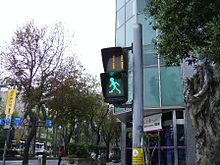Rainforest
Senior Member
Interesting question, are we more interested in increasing the speed of King streetcar, or in improving its consistency? Those are two related but not identical goals.
I would think that for short trips, consistency is more important than increased speed. Inconsistency causes bunching, and bunching can be self-maintaining because the leading car in the pair spends more times at stops and cannot restore the proper gap, at least not before it arrives to the terminus.
On the other hand, consistently low speed through a short central section will have only minor negative impact on the travel times, but will not cause bunching. All gaps will shrink as the streetcars enter the slow central section, and expand back to normal as they go past that section.
If so, then the interference from jaywalking pedestrians that force a consistently lower speed limit but do not hold any streetcar for long, is less of the problem than interference from cars that compete for the lane space.
I would think that for short trips, consistency is more important than increased speed. Inconsistency causes bunching, and bunching can be self-maintaining because the leading car in the pair spends more times at stops and cannot restore the proper gap, at least not before it arrives to the terminus.
On the other hand, consistently low speed through a short central section will have only minor negative impact on the travel times, but will not cause bunching. All gaps will shrink as the streetcars enter the slow central section, and expand back to normal as they go past that section.
If so, then the interference from jaywalking pedestrians that force a consistently lower speed limit but do not hold any streetcar for long, is less of the problem than interference from cars that compete for the lane space.





